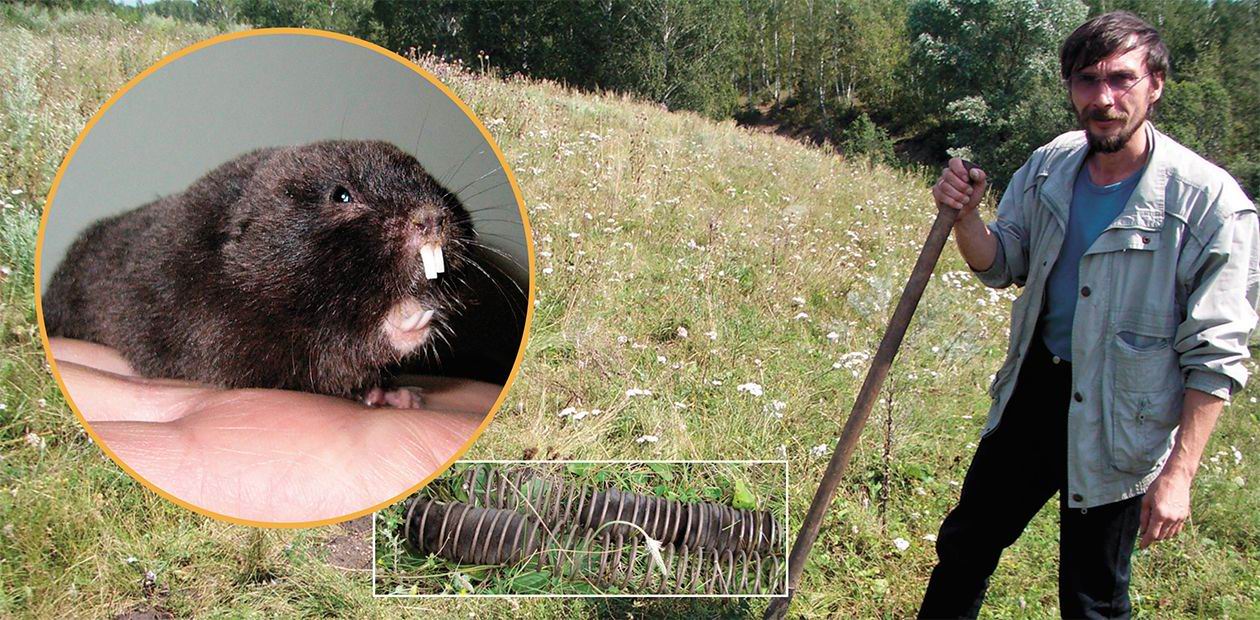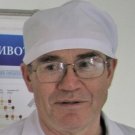NOT Sleeping under the Ground
To unravel another mystery of nature, hidden in deep holes of a subterranean rodent, scientists have armed themselves not with a spade but with a high technology achievement — a miniscule implanted sensor memory storage device, measuring body temperature (the thermochron)
Mole vole (Ellobius talpinus Pall.), an animal widely spread on the vast territory from Ukraine to Novosibirsk, is far from being known to everyone. Children of one of the authors at different times and at different schools spent long hours arguing with biology teachers, trying to make them believe that such animal truly exists. And, judging by the low grades they got, they haven’t succeeded in proving that. This lacuna in teachers’ education is not surprising at all: a mole vole lives under the ground and rarely comes up to the surface, whereas small piles of earth it generates while digging holes are attributed to its more popular relation, a mole.
Due to its underground way of life, a mole vole has managed to escape the attention of zoologists as well: detailed research works on its life mode are still very few. It is known that a mole vole lives in family groups, consisting of 10—15 individuals, and only 1—2 females and a few males participate in reproduction. Just like other subterranean rodents, a mole vole is noted for the length of its life, which is abnormally long for its size. So, if terrestrial species of similar body weight — mice and voles — live out in nature for not longer than a year, separate individuals of a mole vole may live up to 6 years! As for how these animals spend winter, nothing has been known up to now. Holes of a mole vole are very deep — up to 3 meters, and in winter the animals do not come up to the surface.
To the present day, thick snows and frozen grounds have locked away the mystery of the winter life this species leads. By excavating holes of a mole vole during warm season, zoologists have found storage places, filled with rootstocks and tubers.
But after they counted how much food one animal consumes every 24 hours, and multiplied this figure by the family size and the duration of the nival period, it became obvious that this amount of fall supplies should not be sufficient for the winter. Therefore it was assumed that in winter a mole vole hibernates or goes into a long multi-hour numbness — a torpor. But how can this assumption be verified for an animal that spends all winter very deep under the ground?
It is known that the states of active life, torpor and hibernation differ for mammals by body temperature. In the first case, it varies from 35 to 40 °С, in the second case it falls down to 20 °С, and in the case of hibernation it is down to 5 °С. If it were possible to measure the body temperature of a mole vole in winter, then one could clearly answer the question of what it does during the most severe time of the year.
To resolve this problem, the research fellow of the Institute of Systematics and Ecology of Animals, SB RAS, D. V. Petrovsky has designed and created an original hybrid of a thermometer and a memory device (a thermochron) that can be implanted into the body cavity of an animal. The last modification of this temperature data storage device, placed into a small polyethylene tube of 0.5 ml, weighs under 1.5 grams. For comparison, popular foreign analogues weigh about 3—4 grams. Besides, the bodies of foreign devices are made from stainless steel, which is worse for implantation than polyethylene. Finally, our thermochron can be re-used if the batteries are replaced; it is, hence, more cost-effective in comparison with the disposable thermochrons produced by such brands as iButton and Dallas Semiconductor.
Before letting mole voles go back to nature with the implanted storage devices, we carried out tests in laboratory conditions. Animals with implanted thermochrons lived in an animal facility for several months, and one female even had a successful pregnancy. After making sure that the device implantation had not done any harm to the animals, we passed to the field experiments.
In October 2006, animals from one family group were captured and taken to the laboratory. After the animals got over the stress caused by the capture, six individuals were chosen at random and temperature storage devices were implanted. When the animals recovered from the implantation operation, the entire family was brought back to the home hole. In spring, after snow had melted and mole voles started to dig the ground actively, the researchers, not without trepidation, went out to the field.
The results of the field experiment were very satisfactory: five out of six animals with the implanted storage devices were re-captured. Fortunately, all devices had worked perfectly for over half a year, recording body temperatures every hour. Throughout the winter, the body temperatures turned out to be 35—37 °С, which meant that the animals had led an active life all the time, and did not hibernate or torpor. How could it be possible, taking into account the insufficient amount of cache food they had?
It is known that a considerable amount of the energy subterranean rodents obtain from food is spent on muscle activity in constructing underpasses. In winter a mole vole, as it is known, does not dig holes, and all animals from within one family use a common nest, warming each other. It can thus be assumed that their overall energy consumption during the nival period is much lower than in the warmer part of the year.
This is how recent developments in high technologies have helped to unearth another mystery of nature, whose significance steps over the bounds of satisfying a mere zoological curiosity. Let us remind you that the life span of this animal is three times longer than that of other mammals of a similar size. And if earlier we could attributed this phenomenon to hibernation, now we need other explanations, which may help to disclose natural mechanisms of active longevity.
Dr. E. A. Novikov, Dr. D. V. Petrovsky, Dr. M. P. Moshkin (Institute of Systematics and Ecology of Animals SB RAS, Novosibirsk)
Photos by E. Novikov, I. Spivak, D. Petrovsky













